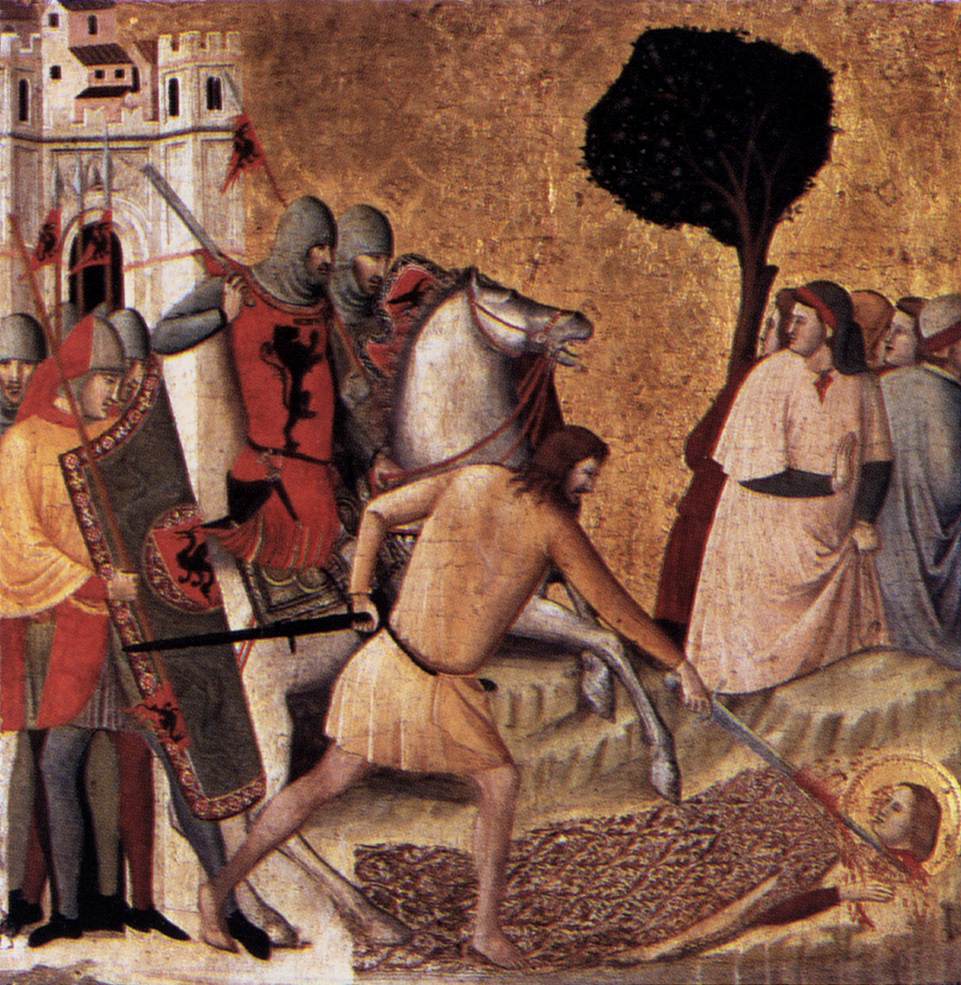Description
The painting Scenes from the Life of St Colomba: Beheading of St Colomba by Giovanni Baronzio is an impressive work of art that stands out for its unique artistic style and carefully designed composition. The work is a classic example of the late Gothic style, characterized by its meticulous detail, its emphasis on ornamentation, and its use of symmetry.
The composition of the painting is one of its most notable features. The central image shows the moment when San Colomba is beheaded, surrounded by a crowd of people in attitudes of pain and astonishment. The scene is carefully balanced, with the characters arranged in a symmetrical pattern that draws the viewer's attention to the center of the image.
Color is another interesting aspect of painting. Baronzio uses a rich and vibrant color palette, with deep shades of red, blue and green creating a sense of intensity and drama. Gold and silver details add a touch of shine and opulence to the work.
The story behind the painting is also fascinating. Saint Colomba was a 6th century saint said to have been beheaded for refusing to renounce his Christian faith. The painting depicts this tragic moment in the saint's life, and is a tribute to his courage and devotion.
There are some lesser known aspects of the painting that are also interesting. For example, Baronzio is believed to have used live models to create the characters in the work, giving it a sense of realism and authenticity. In addition, the painting has been the subject of various studies and technical analysis over the years, revealing fascinating details about its creation and preservation.
In short, Scenes from the Life of St Colomba: Beheading of St Colomba by Giovanni Baronzio is an impressive painting that stands out for its artistic style, carefully crafted composition, use of color, and fascinating story. It is a work of art that deserves to be admired and valued for its beauty and its historical and cultural significance.

